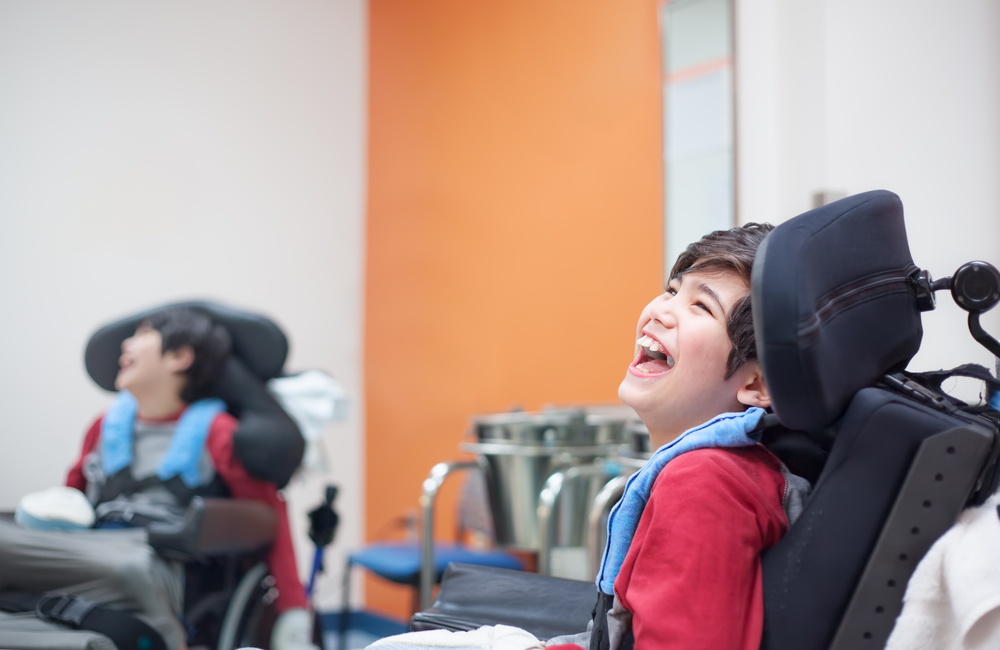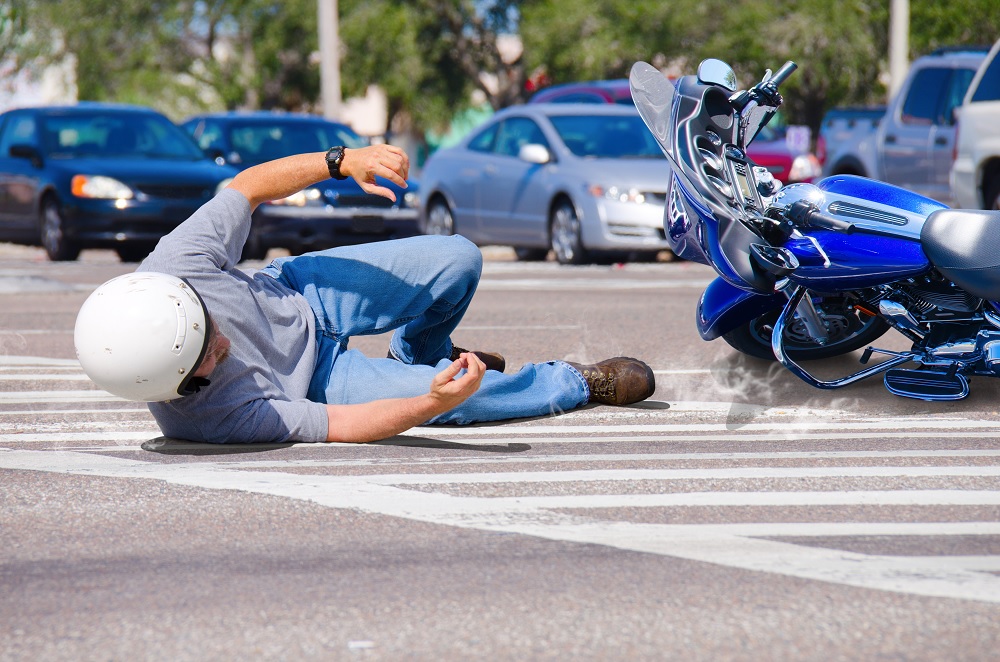Defining Erb’s Palsy: A Neurological Perspective
Erb’s Palsy, also known as brachial plexus birth palsy, is a condition that primarily affects the nerves around a child’s shoulder, leading to varying degrees of paralysis in the arm. This condition is often the result of birth trauma, where excessive pressure on the baby’s neck during delivery can stretch or tear the nerves.
The brachial plexus is a network of nerves that sends signals from the spine to the shoulder, arm, and hand. Damage to these nerves can result in a range of symptoms, including:
- Loss of sensation in the arm
- Partial or complete paralysis of the arm
- Weakness in the arm muscles
- Limited movement in the shoulder, elbow, wrist, or hand
Early diagnosis and treatment are crucial for improving the chances of recovery. Treatment options may include physical therapy, occupational therapy, and in some cases, surgery. The impact of Erb’s Palsy on a child’s daily life can be significant, affecting their ability to perform basic tasks and participate in activities with their peers.
Daily Challenges Faced by Children with Erb’s Palsy
Children with Erb’s Palsy encounter numerous obstacles in their daily lives, stemming from the limited use of their affected arm. The condition often results in a range of motion that is significantly reduced, which can make routine tasks both challenging and frustrating.
- Dressing and undressing can be particularly difficult, as these activities typically require a level of dexterity and arm movement that may not be possible for a child with Erb’s Palsy.
- Simple actions such as reaching for objects, playing with toys, or participating in physical activities are also hindered, which can affect the child’s ability to interact with peers and engage in normal play.
- Additionally, the maintenance of personal hygiene, such as bathing and brushing teeth, often requires assistance, further impacting the child’s sense of independence.
These daily challenges underscore the need for adaptive clothing, which can provide children with Erb’s Palsy the opportunity to perform tasks more independently and with greater ease, thereby enhancing their quality of life.
The Importance of Adaptive Clothing in Promoting Independence
Adaptive clothing plays a pivotal role in fostering independence among children with Erb’s Palsy. The condition, which can limit arm movement and dexterity, often makes traditional clothing a challenge. Adaptive clothing is designed with these unique needs in mind, enabling children to dress themselves with greater ease and less frustration.
Key features of adaptive clothing that promote independence include:
- Magnetic closures instead of buttons or zippers, allowing for one-handed dressing.
- Velcro fastenings that make it simpler to secure clothing without the need for pinching or gripping.
- Elastic waistbands that eliminate the struggle with buttons and zippers on pants.
- Seamless designs to reduce discomfort and the need for adjustments.
By incorporating these elements, adaptive clothing reduces the physical barriers to dressing. This not only enhances the child’s ability to perform daily tasks independently but also boosts their self-esteem and confidence. The psychological benefits are just as significant as the physical ones, as children gain a sense of autonomy and mastery over their own routines. For parents and caregivers, adaptive clothing offers the peace of mind that their child can be self-reliant in their dressing habits, which is a crucial step towards overall independence.
Design Principles of Adaptive Clothing for Erb’s Palsy
Ease of Use: Simplifying Dressing Routines
Adaptive clothing for children with Erb’s Palsy should prioritize ease of use to foster independence and confidence in dressing. Simplified dressing routines can significantly reduce the stress and difficulty associated with getting dressed for both children and their caregivers.
Key features that enhance ease of use include:
- Magnetic closures instead of traditional buttons
- Velcro fastenings for easy adjustment and secure fit
- Elastic waistbands that allow for pull-on dressing
- Wide neck openings and side openings to accommodate limited arm mobility
By incorporating these elements, adaptive clothing designers can create garments that are not only functional but also empower children to dress themselves with minimal assistance. This autonomy is crucial for their self-esteem and daily comfort. It is important for parents to seek out clothing that their child can manage, which may involve trying different designs to find the best match for their child’s abilities.
Safety and Comfort: Ensuring Protection and Well-being
When it comes to adaptive clothing for children with Erb’s Palsy, safety and comfort are paramount. These garments are designed to minimize the risk of injury and to provide a sense of security for both the child and the caregiver. The clothing should allow for easy movement without restricting blood flow or causing discomfort at the site of injury.
Key features to consider include:
- Soft, breathable fabrics that prevent irritation
- Flat seams and tagless designs to avoid pressure points
- Wide openings and adjustable closures for a gentle fit
Moreover, it is essential to ensure that the adaptive clothing does not interfere with any medical devices or supports that the child may require. This careful consideration towards safety and comfort not only aids in the child’s physical well-being but also promotes emotional confidence, as they can engage in daily activities with greater ease and less pain.
Aesthetic Considerations: Balancing Function and Style
When it comes to adaptive clothing for children with Erb’s Palsy, the intersection of function and style is crucial. Parents and designers alike strive to create garments that not only meet the physical needs of the child but also appeal to their sense of style and self-expression. This balance ensures that children feel confident and included among their peers.
- Functionality should always be the primary focus, with features such as magnetic closures, Velcro straps, and elastic waistbands that accommodate limited mobility.
- Style is equally important, as it contributes to the child’s self-esteem and desire to wear the clothing. Vibrant colors, trendy designs, and customizable elements can make a significant difference.
- Inclusivity in fashion means that adaptive clothing should not be distinguishable from mainstream children’s wear, allowing children with Erb’s Palsy to blend in seamlessly.
Ultimately, adaptive clothing should empower children with Erb’s Palsy to dress independently while feeling fashionable and comfortable in their attire. By prioritizing both function and style, manufacturers and parents can provide children with clothing that is as delightful to wear as it is practical.
Selecting the Right Adaptive Clothing
Assessing the Needs of Your Child
When selecting adaptive clothing for a child with Erb’s Palsy, the first step is to thoroughly assess their specific needs. This involves understanding the range of motion in the affected arm, the child’s level of independence, and any sensory preferences or aversions they may have. It’s crucial to consider how the clothing will accommodate physical therapy routines and whether it can be easily adjusted as the child grows.
- Range of Motion: Determine the extent of movement in the child’s affected arm to ensure the clothing allows for comfortable mobility.
- Independence Level: Evaluate how much assistance the child requires with dressing to select garments that promote self-dressing.
- Sensory Preferences: Take into account any fabric textures or tags that might cause discomfort, opting for soft, non-irritating materials.
By taking a personalized approach, parents and caregivers can choose adaptive clothing that not only meets the child’s physical requirements but also supports their confidence and self-esteem. It’s a delicate balance between functionality and the child’s desire to express their personal style, which is an important aspect of their social development.
Materials and Features to Look For
When selecting adaptive clothing for children with Erb’s Palsy, the choice of materials is crucial. Fabrics should be soft and stretchable to accommodate limited movement without causing irritation. Natural fibers like cotton are often recommended for their breathability and gentleness on sensitive skin.
Key features to consider include:
- Magnetic closures or Velcro: These can replace traditional buttons and zippers, making it easier for children to dress and undress themselves.
- Adjustable elements: Look for clothing with adjustable waistbands, cuffs, and necklines to ensure a comfortable fit as the child grows.
- Flat seams and tagless designs: These minimize discomfort and are less likely to irritate the skin, which is particularly important for children with sensory sensitivities.
In addition to the material and structural features, it’s also important to consider the clothing’s washability and durability. Garments should withstand frequent washing without losing their adaptive features or comfort.
Navigating Sizing and Fit for Optimal Comfort
Ensuring the right fit is crucial when selecting adaptive clothing for children with Erb’s Palsy. The goal is to find garments that accommodate the child’s unique range of motion without restricting movement or causing discomfort. Here are some key considerations:
- Measurements: Take accurate measurements of the child’s body, keeping in mind that some areas may require more room due to muscle weakness or joint stiffness.
- Adjustability: Look for clothing with adjustable features such as Velcro straps, elastic waistbands, or expandable seams that can adapt to the child’s body shape and size changes.
- Trial and Error: Be prepared for some trial and error. It’s often necessary to try on multiple sizes or styles to find the best fit.
Parents and caregivers should also pay attention to the child’s feedback when trying on different pieces of adaptive clothing. Comfort is subjective, and what works for one child may not be suitable for another. It’s important to observe the child’s ease of movement and listen to their preferences regarding fit and feel. Lastly, consider the ease of care for the clothing, as items that are easy to wash and maintain will make life simpler for both the child and the caregiver.
Integrating Adaptive Clothing into Daily Life
Creating a Supportive Dressing Environment
For children with Erb’s Palsy, the environment in which they dress can significantly influence their ability to manage clothing independently. A supportive dressing environment is one that minimizes frustration and maximizes autonomy, allowing children to feel confident and capable.
Key elements of such an environment include:
- Accessibility: Ensuring that clothing items are within easy reach and storage is at an appropriate height.
- Simplicity: Keeping the dressing area uncluttered and organized to reduce cognitive overload.
- Adaptability: Having adjustable features within the space, such as seating or mirrors, to accommodate the child’s physical needs.
In addition to the physical setup, the emotional atmosphere is equally important. A positive, patient, and encouraging approach from caregivers sets the tone for a stress-free dressing experience. Celebrating small victories and providing gentle guidance can help children with Erb’s Palsy develop the confidence to navigate dressing with less assistance over time.
Teaching Children Self-Dressing Skills
Empowering children with Erb’s Palsy to dress themselves is a vital step towards fostering independence and self-esteem. The process requires patience, practice, and the right strategies tailored to each child’s capabilities.
Start with simple tasks, such as pulling on elastic-waisted pants or fastening Velcro closures. Gradually introduce more complex skills, always ensuring that the child feels successful at each stage. Here are some key points to consider:
- Break down the dressing process into manageable steps, demonstrating each one and providing hands-on guidance as needed.
- Use adaptive tools like button hooks or zipper pulls to make fastening easier.
- Encourage practice with fun activities that incorporate dressing skills, such as dressing a doll or playing a game that involves changing outfits.
- Celebrate achievements, no matter how small, to build confidence and reinforce learning.
Involving occupational therapists can also be beneficial. They can offer professional insights into the most effective techniques and adaptive equipment. With consistent support, children with Erb’s Palsy can master the art of dressing and enjoy a greater sense of autonomy.
Involving Therapists and Specialists in the Process
The integration of adaptive clothing into the daily lives of children with Erb’s Palsy can be significantly enhanced by the involvement of therapists and specialists. These professionals bring a wealth of knowledge and experience that can tailor the adaptive clothing experience to each child’s unique needs.
- Collaboration with Occupational Therapists: Occupational therapists can provide valuable insights into the specific motor challenges faced by the child. They can suggest modifications to clothing that align with the child’s therapy goals and promote ease of movement.
- Input from Physical Therapists: Physical therapists often focus on the child’s overall strength and mobility. Their guidance can ensure that adaptive clothing supports the child’s posture and physical development.
- Consultation with Speech-Language Pathologists: In cases where communication is affected, speech-language pathologists can recommend adaptive clothing that facilitates non-verbal cues, aiding in the child’s social interactions.
- Engagement with Special Education Teachers: These educators can offer strategies for integrating adaptive clothing into the child’s school routine, making the transition smoother and less disruptive.
By actively involving these specialists, parents and caregivers can create a comprehensive approach to adaptive clothing, ensuring that it not only meets the child’s physical needs but also supports their overall development and social inclusion.
Advocacy and Awareness: Promoting Inclusivity in Fashion
The Role of Parents and Caregivers in Driving Change
Parents and caregivers play a pivotal role in advocating for the inclusion of adaptive clothing in mainstream fashion. Their firsthand experience with the needs of children with Erb’s Palsy positions them uniquely to drive change and influence the industry.
- Identifying Gaps: By pinpointing the lack of suitable clothing options, parents can highlight the demand for adaptive clothing.
- Sharing Stories: Personal narratives about the struggles and successes of dressing children with Erb’s Palsy can resonate with designers and the public.
- Forming Alliances: Collaborating with other families, advocacy groups, and disability organizations can amplify their voice.
- Engaging with Brands: Direct communication with clothing companies can lead to the development of new adaptive lines.
Through these actions, parents and caregivers not only contribute to the well-being of their own children but also pave the way for a more inclusive society that recognizes the diversity of needs in children’s fashion.
Collaborating with Designers and Brands
Fostering partnerships with designers and brands is a pivotal step in making adaptive clothing more widely available and accepted. These collaborations can lead to innovative designs that cater specifically to the needs of children with Erb’s Palsy, ensuring that the clothing is not only functional but also fashionable.
Key strategies for successful collaboration include:
- Identifying Shared Goals: Parents and caregivers should seek out designers and brands that share a commitment to inclusivity and accessibility in fashion.
- Providing Insight and Feedback: By sharing personal experiences and challenges, families can offer valuable insights that can shape the design process.
- Participating in Product Testing: Involvement in the testing phase allows for real-world feedback, ensuring that the final products meet the practical needs of children.
Through these collaborative efforts, the fashion industry can be influenced to adopt a more inclusive approach, creating a market that celebrates diversity and empowers children with Erb’s Palsy to express themselves through their clothing choices.
Educational Initiatives and Community Outreach
Educational initiatives play a crucial role in fostering a society that is more inclusive of the needs of children with Erb’s Palsy. By informing educators, peers, and the broader community about the condition and the benefits of adaptive clothing, these programs can help to reduce stigma and promote empathy. Community outreach efforts are equally important, as they provide opportunities for parents and caregivers to connect with one another, share experiences, and access valuable resources.
Key strategies for effective educational initiatives and community outreach include:
- Developing informative workshops and seminars that address the specifics of Erb’s Palsy and the design of adaptive clothing.
- Partnering with local schools and community centers to distribute educational materials and organize inclusive events.
- Utilizing online platforms to reach a wider audience and provide support through forums, webinars, and social media campaigns.
Through these efforts, the goal is to create a supportive network that not only understands the challenges faced by children with Erb’s Palsy but also actively contributes to creating a more accommodating world for them.




